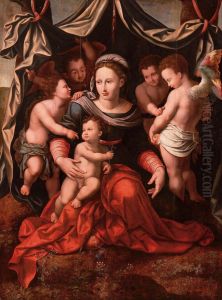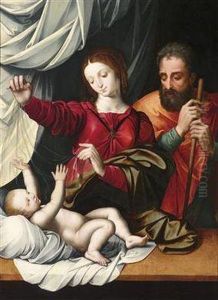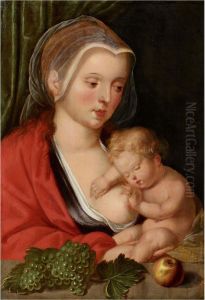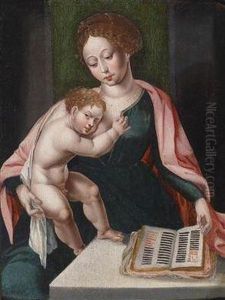Cornelius Van Cleve Paintings
Cornelius Van Cleve was a Flemish painter who was born in 1520 in Antwerp, then part of the Habsburg Netherlands. He was known for his work as a portraitist and religious painter. His exact date of birth is not well documented, but he was believed to be active as a painter by the 1540s. He was a contemporary of the more famous Pieter Coecke van Aelst and may have been influenced by his work, as well as that of other Northern Renaissance artists.
Little is known about Van Cleve's early life or training. However, it is thought that he came from a family of artists, which was common in the period. His father, Joos van Cleve, was a well-respected painter in his own right, from whom Cornelius likely received his initial training. Joos was known for combining traditional Flemish painting techniques with Italian influences, and these factors may have also played a role in Cornelius's development as an artist.
During his career, Cornelius Van Cleve created altarpieces and portraits, although much of his work has been lost over time or remains unidentified. His style is characterized by a strong attention to detail and a clear influence from the Italian Renaissance, which was typical of Flemish artists of the time who were looking to integrate new ideas and techniques into their work. Van Cleve's portraits, in particular, display a finesse in the depiction of fabrics and textures, as well as a sensitive approach to the portrayal of his sitters.
Cornelius Van Cleve's paintings are part of the Northern Renaissance, which was marked by an increasing use of oil paint, a focus on secular as well as religious themes, and an emphasis on the individual. Unfortunately, his career was not as well documented as some of his peers, and as a result, he did not attain the same level of fame. He died in 1567, and while his work did not have a widespread impact on subsequent generations, it remains a testament to the artistic skills and styles that were prevalent in the mid-16th century in the Low Countries.



